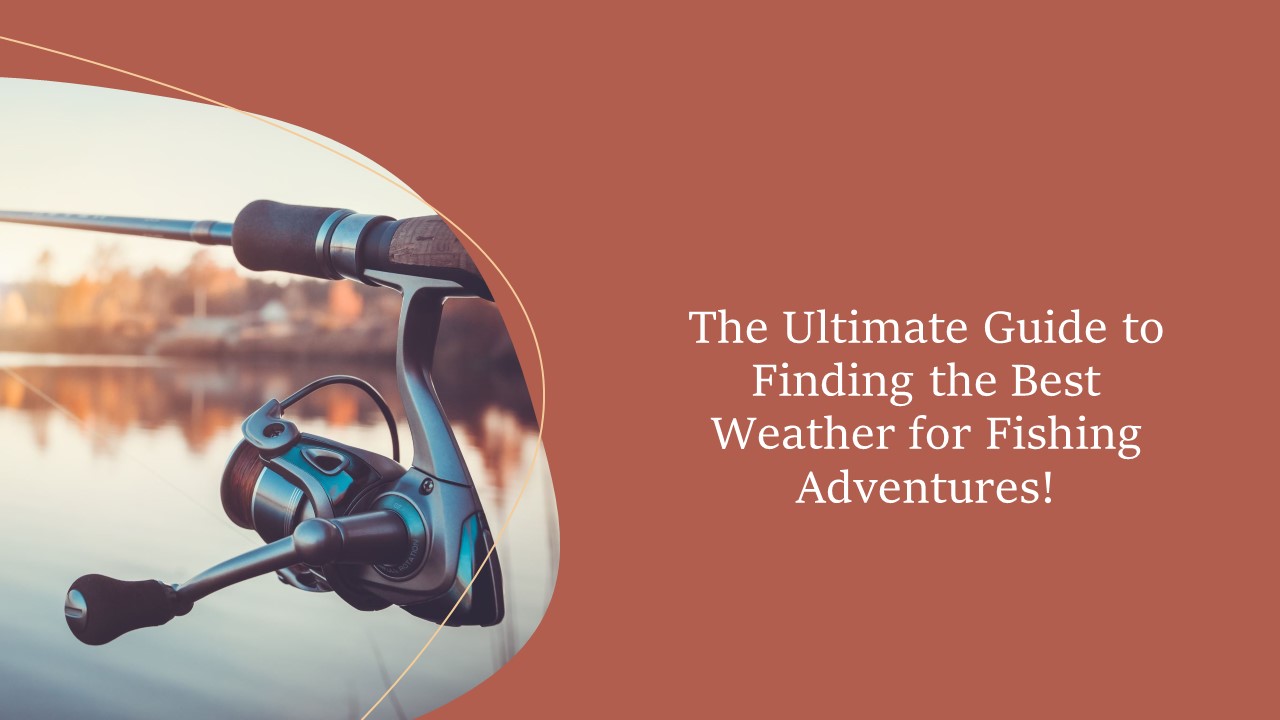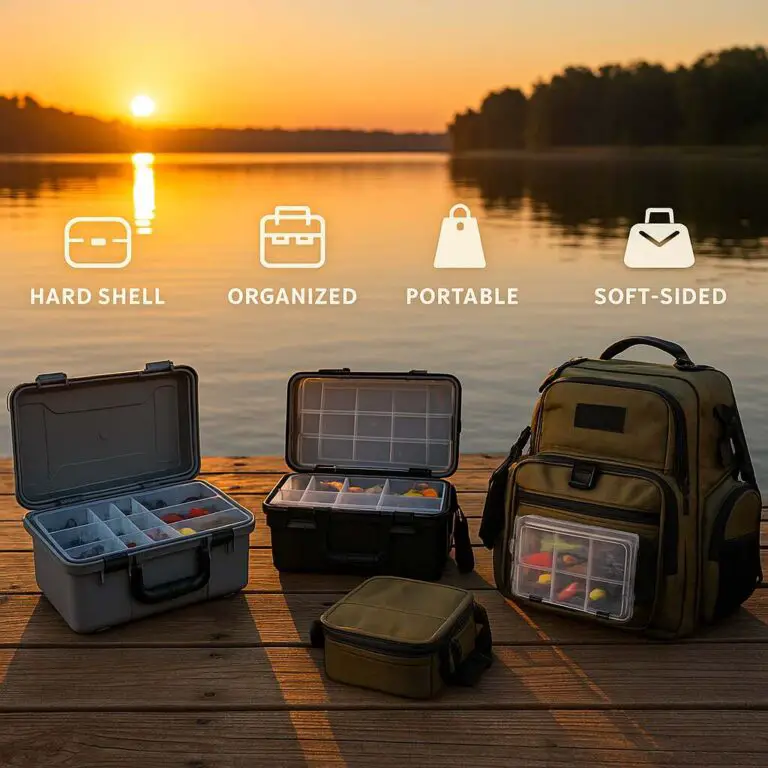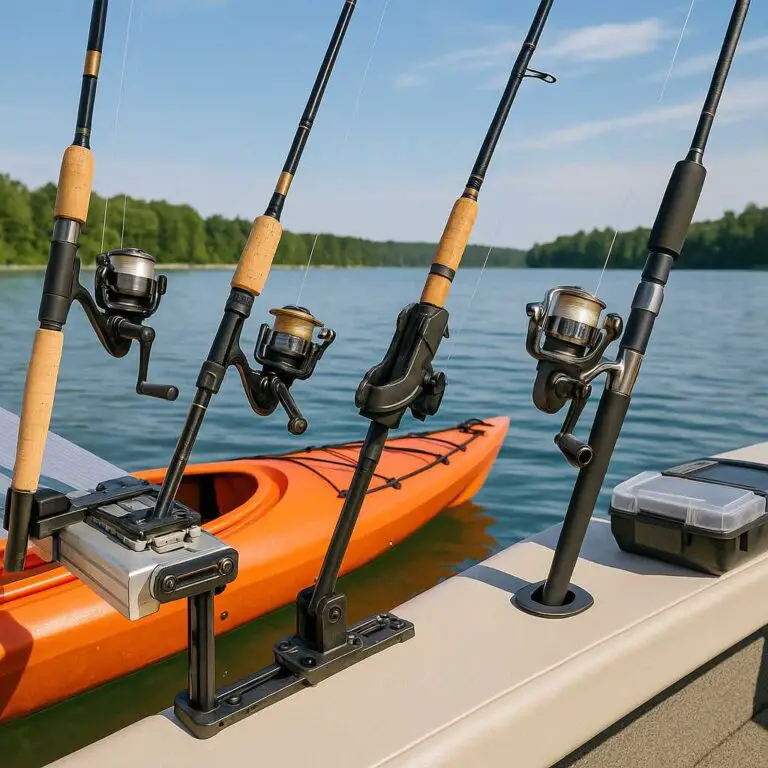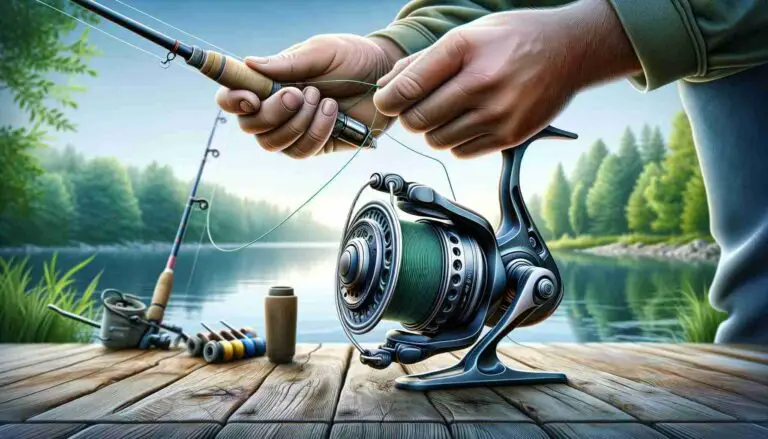Hey there! Whether you’re a seasoned pro or just starting out, you know that the weather can make all the difference between a successful fishing trip and a not-so-great one. The best weather for fishing varies based on factors like fish species and location. Generally, overcast days can be favorable, as fish feel secure and are more active in shallower waters. Stable or rising barometric pressure and mild temperatures can also lead to better catches. While light to moderate winds near the shore attract fish and early mornings and late evenings are prime fishing times due to increased activity.
The best weather for fishing is a combination of all these factors, but that’s too broad, right? That’s why in this guide I’ll provide you with tactics and tips to find the best weather condition according to your strategy and season.
Understanding the Impact of Weather on Fishing
Before I dive into the specifics of different weather conditions, let’s first understand how weather can influence fish behavior and ultimately affect our fishing success.
- How weather affects fish behavior: Weather plays a crucial role in determining how active and responsive fish will be to our bait or lures. Understanding these behavioral patterns can give us a significant advantage. Here are some key factors to consider:
- Temperature and fish activity: Fish are cold-blooded creatures, which means their body temperature is influenced by the surrounding water. As the water temperature changes, so does their activity level. Warmer temperatures tend to make fish more active and likely to feed, while colder temperatures can slow them down.
- Barometric pressure and feeding habits: Barometric pressure, also known as atmospheric pressure, can affect fish behavior in intriguing ways. A stable or rising barometer often triggers more active feeding behavior, while a falling barometer might cause fish to become less active or go into hiding.
- Cloud cover and light conditions: The amount of cloud cover can impact the amount of light reaching the water’s surface. On overcast days, fish might venture into shallower areas to feed, feeling safer under the protection of cloud cover. In contrast, bright sunny days might push them into deeper waters or undercover.
The influence of wind on fishing
The wind is another crucial element that can significantly affect fishing conditions. It’s not just about the wind blowing in your hair; it can create unique circumstances that fish respond to differently:
- Wind direction and its significance: The direction from which the wind is blowing can determine the movement of food sources in the water. This, in turn, affects where the fish might be located. For instance, winds pushing towards the shore might lead to more action close to the banks.
- Wind speed and its effects on water conditions: The intensity of the wind can affect the water’s surface, creating ripples, waves, or even choppy conditions. This can impact how fish behave, as some species might become more active in turbulent waters, while others seek calmer areas.
Understanding these weather-related influences on fish behavior is like having a secret key to unlocking the best fishing spots and techniques.
Fishing in Warm Weather
Fishing in warm weather – a perfect way to enjoy the sun, the water, and the thrill of catching some fantastic fish! Let’s dive into the best tips for making the most out of those sunny days.
Fishing during sunny days
When the sun is shining, some fish species become more active and eager to feed. Here’s what you need to know:
- Ideal species to target: Many warm-water species love basking in the sun and are more likely to bite during clear, sunny days. Look out for bass, bluegill, catfish, and crappie, as they tend to be more active in warm weather.
- The best time of day for warm-weather fishing: Early mornings and late evenings are prime fishing times during warm weather. Fish tend to be more active during these cooler parts of the day, so set your alarm clock and be ready to hit the water!
Fishing in cloudy weather
Don’t be disheartened if you encounter some cloudy skies during your fishing trip. Cloud cover can work in your favor too!
- Advantages and disadvantages: Cloudy weather can create more favorable fishing conditions, especially if the fish feel more secure and comfortable under the cover of clouds. However, it might be a bit challenging to spot fish in the water due to reduced visibility.
- Recommended bait and lures: In cloudy conditions, fish might rely more on their sense of smell and vibration to locate food. Try using scented baits or lures with more movement to attract their attention effectively.
Here’s What Color Bait To Use On Cloudy Days
Fishing during hot temperatures
As the temperature rises, fishing techniques and strategies need some adjustments to stay on top of your game:
- Shallow vs. deep water fishing: When the sun is scorching, fish often seek cooler waters, which might mean heading towards deeper areas of the lake or river. However, during the early morning or late evening, some fish might still be active in shallower waters.
- Tips for staying comfortable and hydrated: Don’t forget to take care of yourself too! Wear lightweight, breathable clothing, bring plenty of water, and wear sunscreen to protect yourself from the sun’s rays.
Remember, fishing in warm weather can be incredibly rewarding, but it’s essential to understand how the fish behave during these conditions. Now, let’s explore the magic of fishing in cold weather.
Fishing in Cold Weather
Winter fishing might sound challenging, but it can be a truly rewarding experience if you know how to adapt to the colder conditions. Let’s unravel the secrets of fishing in cold weather and discover some fantastic opportunities.
Fishing in winter
When the temperatures drop and the water gets chilly, some fish species change their habits. Here’s how to make the most of your winter fishing adventures:
- Coldwater fish species to target: In colder months, certain fish species become more active. Look out for trout, walleye, pike, and perch, as they are known to thrive in colder waters.
- Strategies for successful ice fishing: Ice fishing is a classic winter activity, and it can be a blast when done right. Make sure the ice is thick enough and follow safety guidelines. Set up your fishing spot near underwater structures where fish seek shelter and food.
Fishing during rainy weather
Rainy days might not seem ideal, but they can actually lead to some excellent fishing opportunities:
- How rain affects fish behavior: Rainfall can wash insects and other food sources into the water, creating a feeding frenzy for fish. Take advantage of this by fishing near the mouths of streams and rivers where the freshwater meets the saltwater.
- Safety precautions during wet conditions: Remember to wear appropriate rain gear to stay dry and comfortable. Slippery surfaces can be hazardous, so be cautious when moving around your fishing spot.
Fishing in windy and stormy conditions
Fishing in the wind and storms might seem daunting, but it can be surprisingly fruitful if you know how to handle it:
- Safety tips and equipment considerations: Check the weather forecast before heading out and avoid fishing during severe storms. Ensure you have sturdy equipment to handle the wind and keep yourself safe.
- Best practices for handling strong winds: In windy conditions, fish might be closer to the shore or near underwater structures for protection. Adjust your casting technique and use heavier lures to combat the wind’s effects.
While fishing in cold weather requires some extra preparation and patience, but the rewards are well worth it. Remember to dress warmly, be cautious when dealing with icy conditions, and keep an eye on the weather forecast to make the most of your winter fishing escapades.
Fishing in Transitional Weather
Fishing during transitional seasons like spring and fall can offer a dynamic and exciting fishing experience. As the weather shifts and nature comes alive, let’s explore the best strategies for successful fishing during these times.
Fishing in spring
As the days get longer, and the temperature starts to rise, fish become more active after the winter lull. Here’s how to make the most of your spring fishing adventures:
- Prime locations and species to catch: Look for areas with shallow water, as fish tend to move closer to the shore during spring. Species like bass, crappie, and trout are more active and eager to feed during this time.
- Tips for fishing during temperature fluctuations: Spring weather can be unpredictable, with varying temperatures throughout the day. Fish might change their behavior accordingly, so be prepared to adjust your fishing techniques as needed.
Fishing during fall
As summer comes to an end, fish sense the changing season and prepare for the colder months ahead. Here’s how to capitalize on the fall fishing opportunities:
- Preparing for changing fish habits: As the water cools down, fish tend to migrate to deeper areas. Focus on fishing around drop-offs, underwater structures, and areas with plenty of vegetation.
- Tactics for catching fish before winter sets in: Fall is the time when fish actively feed to store up energy for the winter. Use lures that mimic the food sources available in the area to entice them to bite.
Whether it’s spring or fall, transitional weather can create a dynamic fishing environment with plenty of opportunities to reel in some impressive catches. Stay observant and be willing to adapt your approach based on changing weather patterns, and you’ll be well on your way to a successful fishing experience.
Now that I’ve covered the nuances of fishing in different weather conditions, let’s explore how to make use of weather forecast tools to plan your fishing trips like a pro!
Using Weather Forecast Tools for Fishing:
Using weather forecast tools for fishing can be a game-changer, helping you plan your trips more effectively and increasing your chances of a successful outing. Let’s delve into how you can harness the power of weather predictions to optimize your fishing adventures.
Understanding weather forecasts
Weather forecasts provide valuable information about upcoming weather conditions, such as temperature, wind speed and direction, barometric pressure, cloud cover, and precipitation. Here’s how to interpret the key elements:
- Key weather terms and their meanings: Familiarize yourself with terms like “partly cloudy,” “barometric pressure,” “wind gusts,” and “precipitation chance.” Understanding these terms will help you make sense of the forecast.
- The reliability of weather apps and websites: While weather forecasts are generally accurate, they might not always be precise for specific locations or microclimates. Consider using multiple reliable sources and local weather reports for a more comprehensive understanding.
How to plan your fishing trip around the weather
Weather patterns can significantly influence fish behavior, and planning your fishing trip around them can make a substantial difference in your success:
- Utilizing weather patterns to your advantage: Pay attention to factors like temperature trends, wind direction, and barometric pressure. For example, a rising barometer can indicate better fishing conditions.
- Backup plans for unexpected changes: Weather can be unpredictable, so have a backup plan in case conditions change rapidly. Have alternative fishing spots or techniques ready to adapt to the new situation.
Being well-prepared and having a flexible approach will make you a more successful angler.
Remember, each fishing trip is a unique experience, and with the right weather knowledge, you’ll be on your way to unforgettable fishing adventures.
Conclusion
In conclusion, finding the best weather for fishing is a multifaceted endeavor that involves considering various factors. While each fishing trip is unique, some general guidelines can help increase your chances of success. Overcast days, stable barometric pressure, mild temperatures, and light to moderate winds are often favorable conditions. Early mornings and late evenings are prime times for fishing due to increased fish activity. However, the best weather ultimately depends on the specific fish species you’re targeting and the location you’re fishing in.
So, embrace the joy of fishing, adapt to the weather conditions, and savor every moment spent on the water, as it’s the experience and passion for the sport that truly make it special.
Happy fishing, and may your lines always be tight!
Here’s a complementary guide: The Best Day To Go Fishing: Your Ultimate Fishing Calendar








